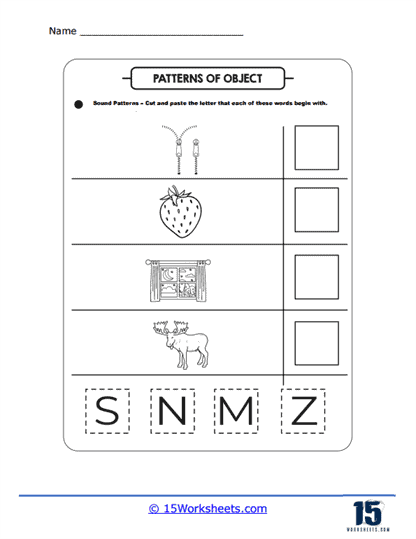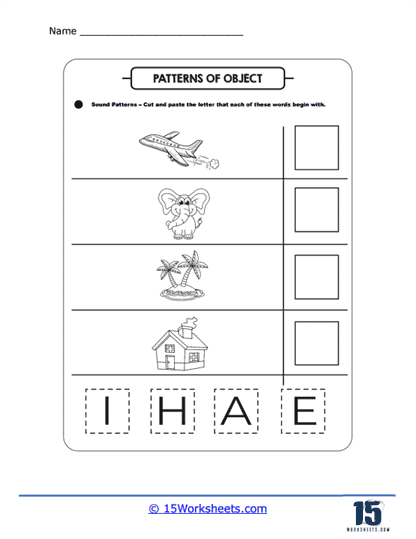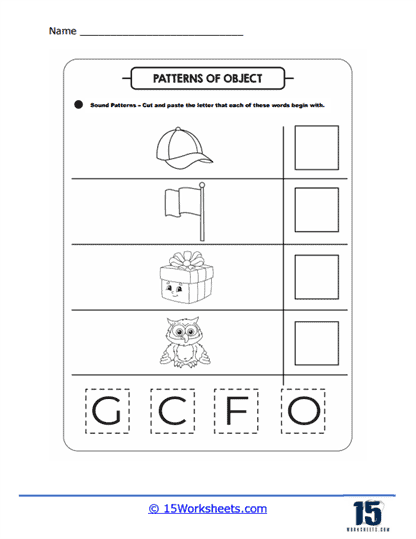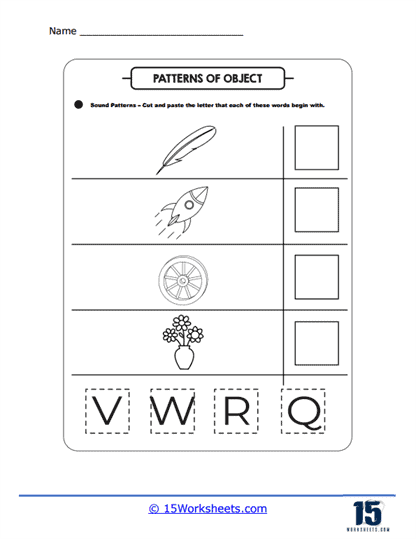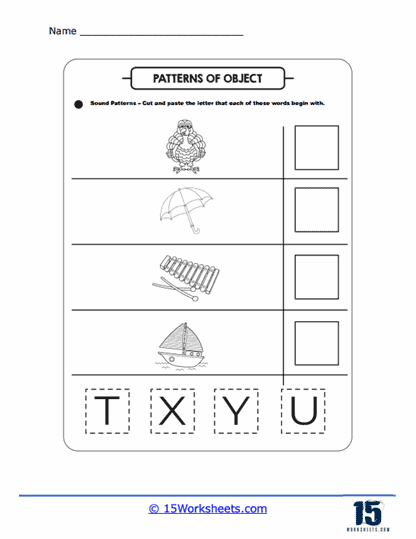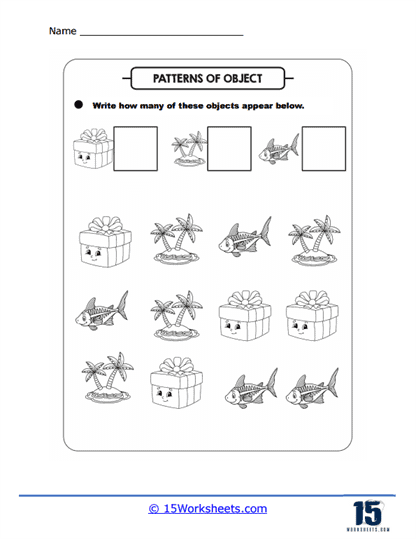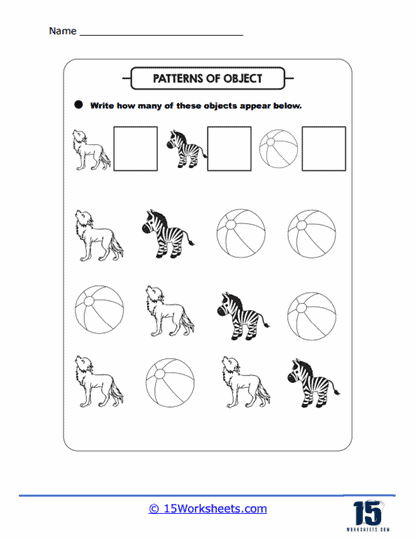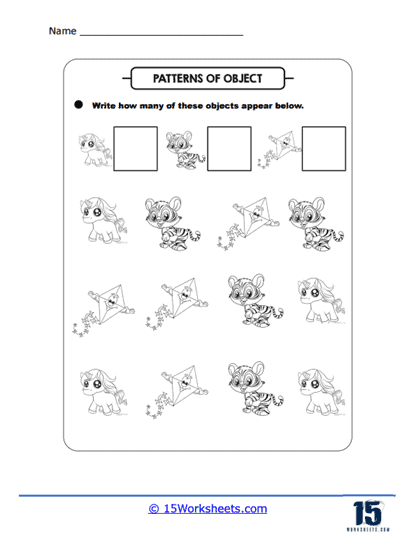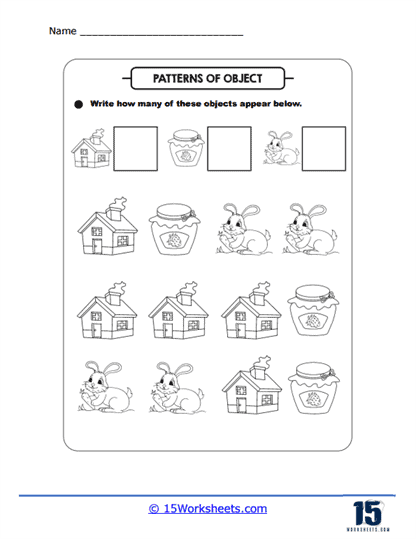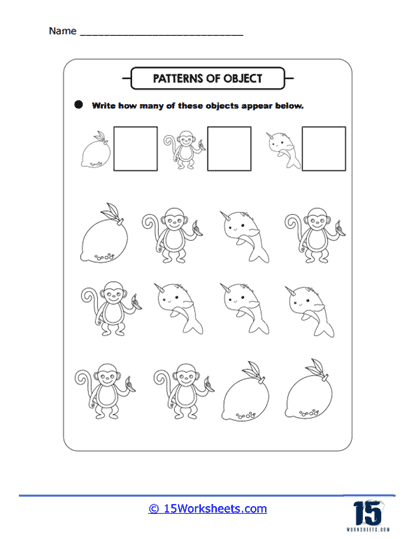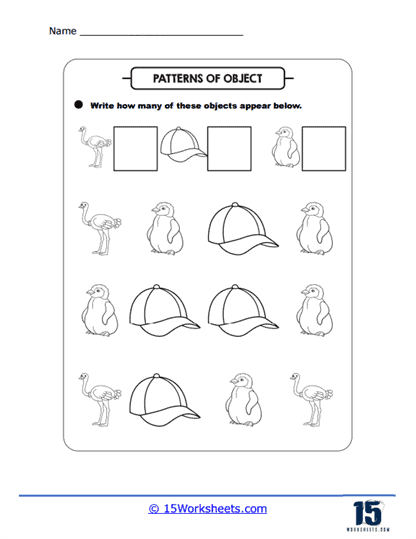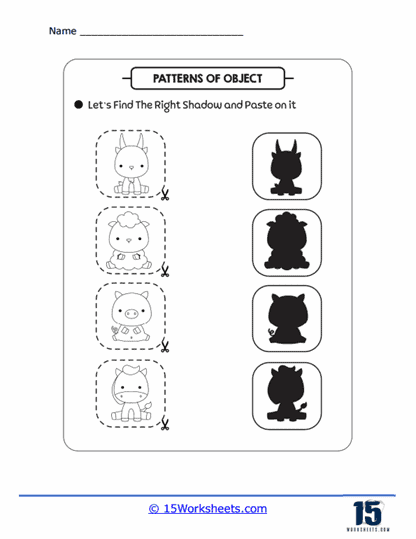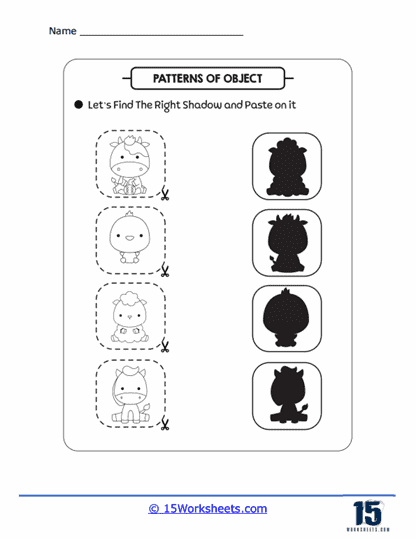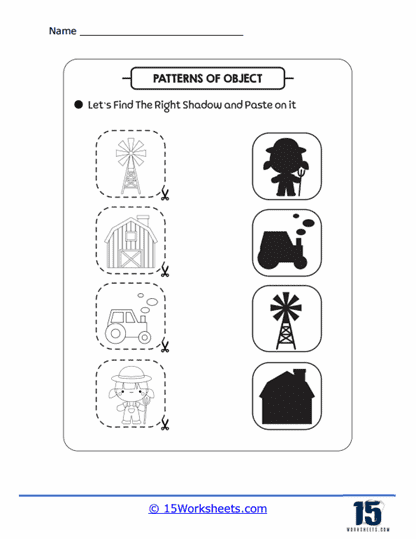Patterns of Objects Worksheets
About These 15 Worksheets
These are sheets filled with fun activities that use different kinds of objects to help you recognize, understand, and create patterns. The objects could be anything from shapes, pictures, numbers, or letters.
For example, one worksheet might have a pattern that goes like this: circle, square, circle, square, and then a blank space. Your job would be to figure out what comes next in the pattern. If you said “circle”, you’re right! This is a simple example of how these worksheets work.
So, how can these worksheets help you? Well, there are many ways!
They help develop your observation skills. When you work with Patterns of Objects Worksheets, you need to pay close attention to details to spot the patterns. This skill isn’t just useful in math; it’s also great for life in general. It helps you notice things around you, like the smallest details in a picture, or changes in your environment.
These worksheets can help improve your logical thinking skills. Figuring out what comes next in a pattern involves a lot of reasoning and thinking. This is a fundamental part of problem-solving in mathematics, and it’s also something you’ll use in many other areas of life. It’s like being a detective, using clues to solve a mystery!
Working with these worksheets can also help improve your creativity. Yes, math and creativity can go together! Once you understand how patterns work, you can start creating your own. This isn’t just fun; it also helps you think in new and different ways.
Patterns of Objects Worksheets can also boost your confidence. At first, patterns might seem challenging, but as you practice and get better at recognizing them, you’ll start feeling more confident. This is important in math and in learning in general. Confidence helps you tackle new problems and challenges, knowing you have the skills to figure them out.
Finally, these worksheets can help you in more advanced math. Patterns are everywhere in mathematics! For instance, understanding patterns is key to learning multiplication (2, 4, 6, 8 is a pattern, right?). Also, patterns are essential in understanding the concepts of algebra in later grades.

